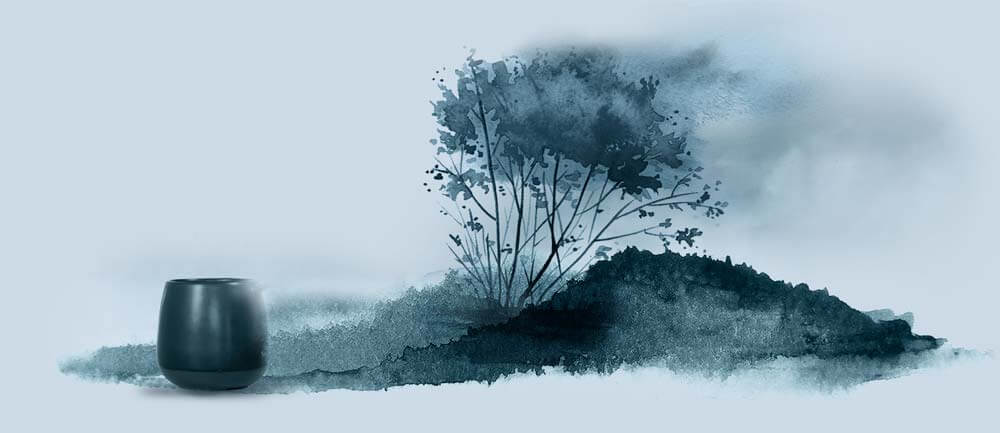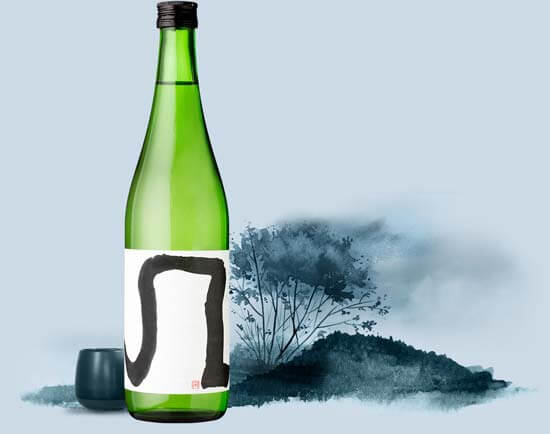Profile & Tasting
The taste of Kogarashi is flagrant and crisp with sharp edges that ignite the palate. This contrasting experience creates a remarkable versatility – not unlike the Kogarashi winds that breeze through Mount Rokkō. On top of that, the label reminds us of its cold, windy namesake. With a vibrant flavour and timeless design, Kogarashi looks as good as it tastes.



Kogarashi can be stored at room temperature thanks to a careful process and masterful combination of yeast, rice and bottling techniques. The emerald-green glass of the bottle protects the sake Kogarashi from the light, ensuring its long-lasting quality. Once opened, Kogarashi should be consumed within twenty days when chilled – while other sake typically lose their freshness in less than ten.
Tasting notes
The following Tasting Notes have been delivered by Sebastien Lemoine to explore the journey of Kogarashi from the moment it is opened through to Day 25. As a Junmai Daiginjo sake, each perfect grain of rice in Kogarashi is polished to 50%, while the sake is unpasteurised to create a fresh, elegant flavour profile that evolves over time. As Kogarashi matures, it becomes possible to enjoy the drink in all new and exciting ways.
Have a read of Sebastien’s Tasting Notes and discover the versatile Kogarashi experience.

 Sebastien Lemoine
Sebastien Lemoine
Sake Educator
Opening Day
Pale yellow in color, Kogarashi immediately offers a complex fragrance of nuts, rice and fruit. Candy notes (acid drops) complement this very pleasant bouquet.
The first taste sensation is sweet – however, acidity and umami also flow through, resulting in a nice balance. The sake is lively and has a medium body texture.
Day 5
The fragrance still reveals enjoyable fruit aromas (muscat grape) with some nutty underwood notes (koji). More restrained, it vanishes below detection level after a while. On the palate, the smooth liquid continues to offer a nice balance between sweetness and acidity.
Day 15
Lactic aromas are now rising through the nose, while Kogarashi remains balanced and umami rich on the palate. Mouthfeel has lost its freshness and vivacity, however it still offers a pleasant tasting experience.
Day 20
A scent of Japanese pickles, called Hine-ka for sake, makes its way through the nose before vanishing. Bitterness is now more intense. Lovers of matured Namazake (unpasteurized sake) may still enjoy Kogarashi after 20 days, although it’s an acquired taste.
Day 25
On the palate, sweetness is now balanced by a caramel-like bitterness more than acidity, as if tamed. This overall soft and sweet mellow beverage inspires the desire of a pairing with some fresh goat cheese or a sabayon.
 Sebastien Lemoine
Sebastien Lemoine
Sake consultant, sake educator (Le Cordon Bleu, Temple University), Sebastien is a regular host on the influential Sake On Air English podcast program. His company, Passerelle, produces events and tours in relation to sake and Japanese culture.
Tasting vessel: Junmai glass by Riedel (large open diamond shape).
Storage: Kogarashi stored at ambient temperatures for 9 months after production was shipped to Sebastien during the summer, and then stored by Sebastien in an electric wine cellar (temperature about 12 degrees Celsius), before and after opening.
Note: These tasting notes reflect the tasting experience of renowned sake expert Sebastien Lemoine. Everyone has a different palate and Kogarashi is a versatile sake presenting a complex aromatic and taste evolution after opening. We invite you to conduct your own tasting at different periods after opening, and would be more than happy if you share with us your own tasting notes.

